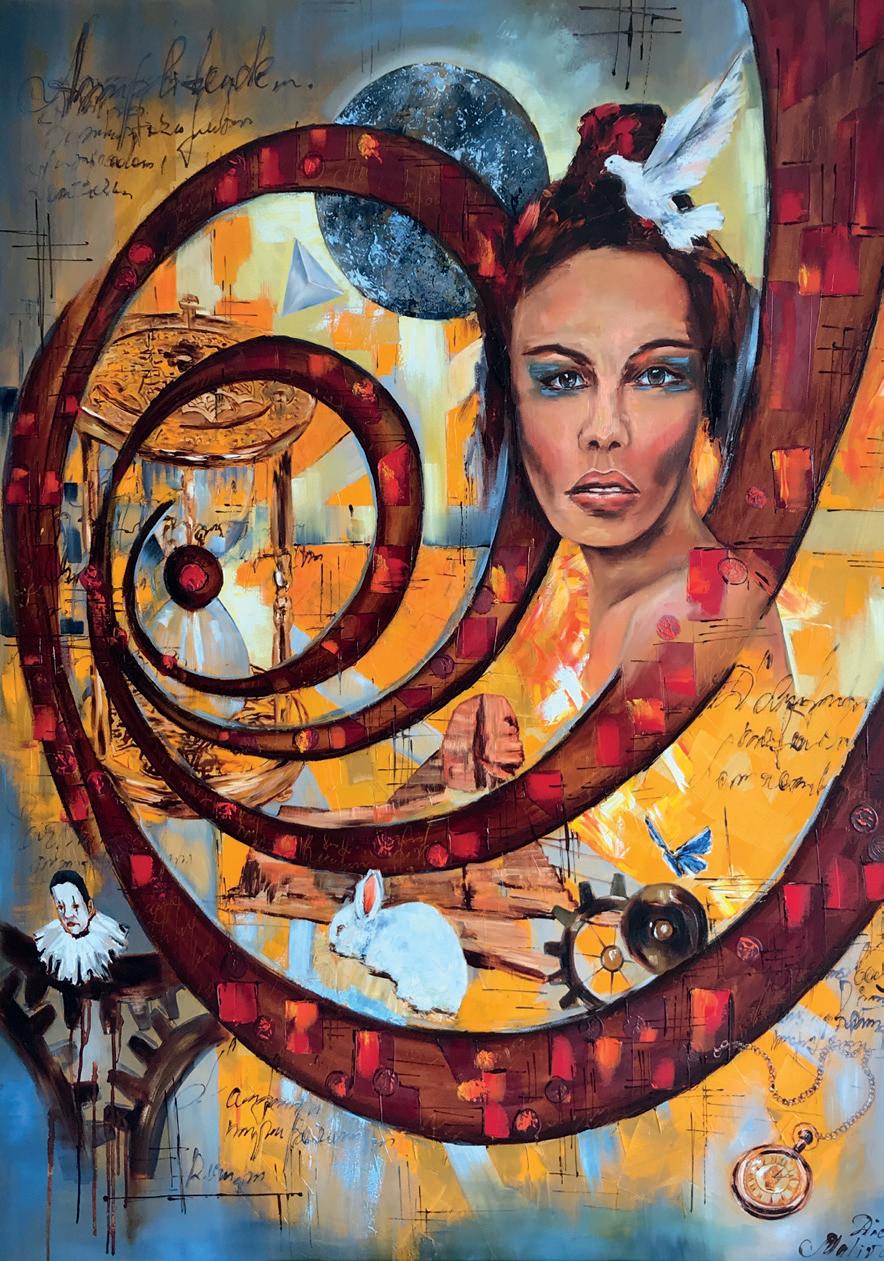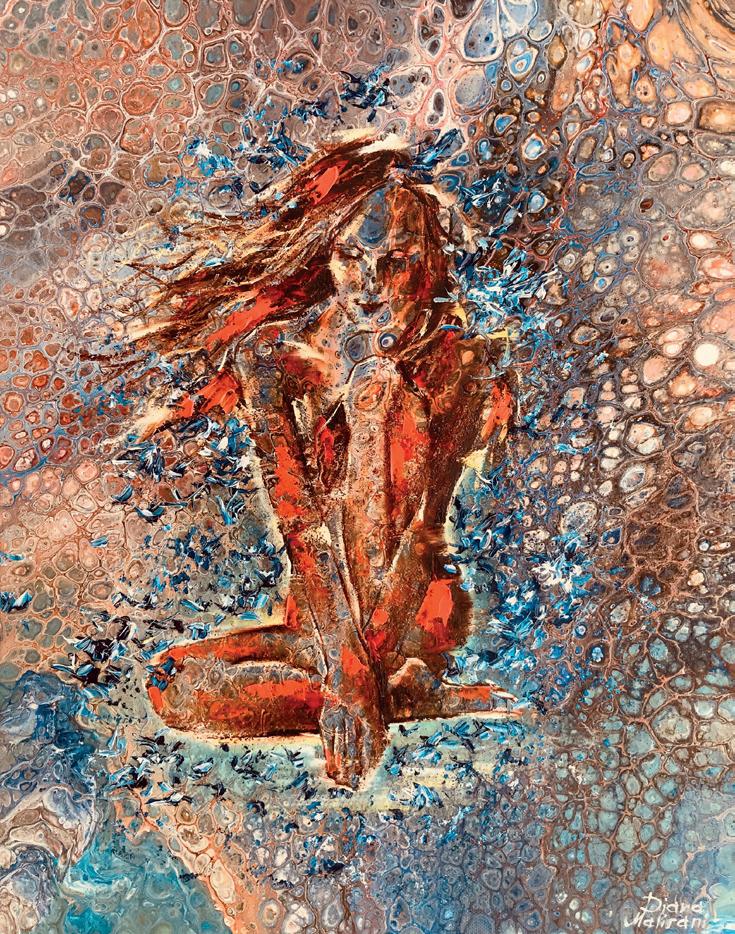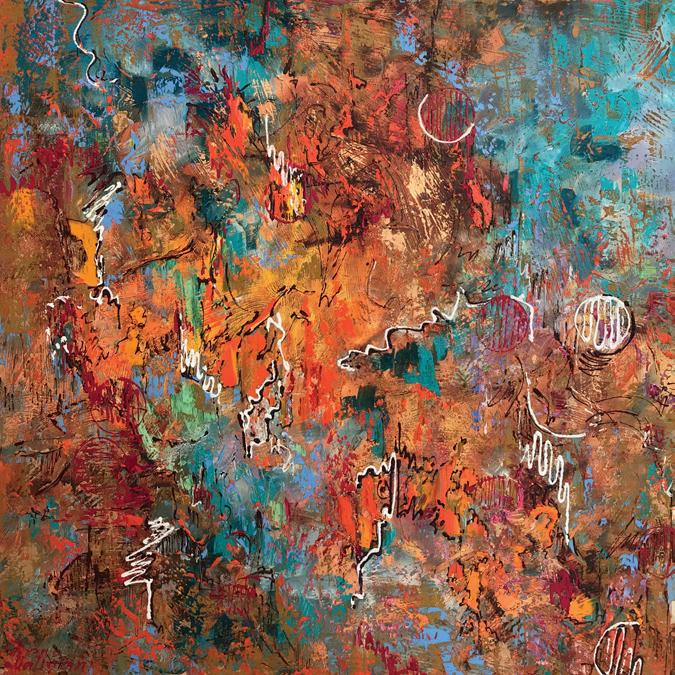
3 minute read
Artwork An lysis The Blue Butter ly y Timothy W rrington
Artwork Analysis: ‘The Blue Butterfly’s Dream’
Diana Malivani’s tender and complex representation of the female mind is sincere and empowering in her ability to reflect a thought provoking and powerful combination of womanhood. Malivani herself said that “one of the most difficult goals of artists depicting the moods of the woman’s heart on canvas is to convey their force, depth, and meaning in abstract compositions”; certainly, this is a goal that the artist resolutely challenges herself to exceed, as she shows strength and aspiration within the narrative of each of her subjects. Her fervent attitude towards these depictions creates cerebral ties with the philosophical thoughts of Frida Kahlo, as both artists transpose a clear and communicative expression of their subjects integral thoughts, balanced with recurring motifs that encompass their gentle femininity - for Kahlo this is found in the form of flowers, while Malivani frequently includes butterflies in her works, particularly in her collection entitled The Blue Butterfly’s Dream.
Advertisement
The psychological depth of the figures that Malivani paints suggest connections with James McNeill Whistler and Leonardo da Vinci. Pieces such as Dying in the Rain and Lily convey an intellectual element through the determined gaze held by the subject. These works impeccably combine Realism with Abstraction, as the execution contains both elements of Renaissance techniques, as well as a sense of Abstract Expressionist vigour in the brushwork, which aligns Malivani with artists, such as Arshile Gorky, through the use of strong pigment and avant garde form.
“The Illusion of Presence” oil on canvas, 2019
Upon deep analysis of Contemplation, the same innate philosophies can be detected, however in this instance they possess a more abstracted form. Parallels with Surrealism can be surmised through Malivani’s structural balance between abstraction and definable elements; indeed, her proclivity for eyes and the symbolic exploration of vision is certainly one which the artist shares with Rene Magritte as both artists draw an emblematic correlation between sight and agency. In Contemplation, Malivani asserts an overpowering sense of motion through the coalescing red and green hues and fluid use of line, which give the impression that the butterfly is in flight alongside the three sets of optics as the figure is aligned with the allegorical use of nature in the work. These somewhat opposing elements rest in a harmonious equilibrium that reflects the contrasting elements of femininity, while allowing the viewer a treasured opportunity for self reflection while they reflect on their own interpretations of the artwork.
Malivani’s thoughtful depictions of women and children firmly align with Pre-Raphaelite painter Sophie Gengembre Anderson, who famously depicted women amongst nature with conscientious souls and playful personalities, which mirrors Malivani’s relationship with femininity that she expresses through her paintings. Observing pieces such as She Who Aspires and Solitude, the viewer can sense both the might and the fragility of the central figure, as the artist continues to depict rounded and complex female characters that provide an insight into the experience of womanhood.
The ardent expression of liberation is tangible in Harmony and Escape as the artist communicates her fundamental thoughts with tender and deliberate attention. Through the delicate combination of contemporary and traditional techniques, Malivani is able to cast an astute perspective on the history of the womanhood through an avant garde form of powerful visual communication.
Timothy Warrington, International Confederation of Art Critics

“Awakening” acrylic, oil and gold leaf on canvas, 2019


“Comeback” acrylic and oil on canvas, 2019






